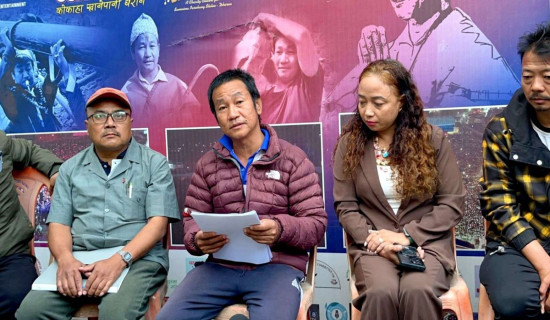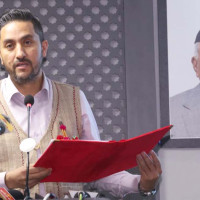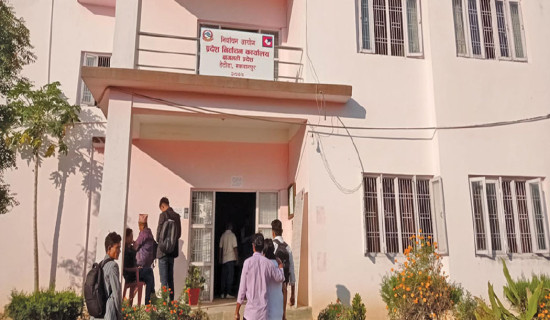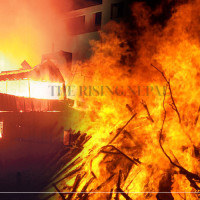- Wednesday, 3 December 2025
Give Top Priority To Mineral Extraction
Minerals are one of the resources that have multiple uses in industrial and other sectors. Minerals are found all over the world but not all countries have utilised such resources for economic development. There are also minerals in Nepal, but the country has not been able to utilise such resources for development. There is not even an iota of doubt that utilising minerals and other resources would contribute to national development and play a significant role in alleviating poverty.
Nepal has a long history of mineral exploration and extraction dating back to ancient times. Old mine pits, adits (horizontal passages leading to mines), waste places and remains of mine tailings (byproducts) are found in many places or villages named after minerals. They include Tama Khani (copper mine), Falam Gaun (iron village), Sisha Gaun (lead village), Khani Gaun (mine village), Sun Chahari (gold falls), Khani Khola (mine stream) and so on.
Mineral-exporting country
There is evidence of small-scale mining for iron, cobalt, copper, lead, zinc, gold, nickel, etc. in Nepal. Before the restoration of democracy in 1951 AD, the country was known as a mineral-exporting country; it would export iron and copper to Tibet and cobalt to India. After 1951, the export business declined. The 1950s were characterised by political instability, culminating in the introduction of the Panchayat system in December 1960.
In order to stimulate mineral exploration, evaluation and extraction, the Department of Mines and Geology (DMG) came into existence in 1976. The work of mineral exploration then moved forward. In fact, after the establishment of the Department, more systematic exploration, evaluation and extraction have taken place. There has been progress in identifying minerals. Over 1,000 mineral deposits have been identified. Some important minerals have been studied in detail and their properties assessed based on availability, quality and price. Some mineral industries have also been set up.
The identified minerals include economic deposits, sub-economic deposits, mineral reserves and mineral occurrences. Economic deposits are technically and economically profitable. Sub-economic deposits are not profitable from the standpoint of quantity and quality. Mineral resources have less than the required current economic limits in terms of thickness, grade and depth characteristics. And mineral occurrences are minor resources.
Minerals are found in the Tarai, Shivalik/Chure region, the Lesser Himalaya, the Higher Himalaya and the Tethys Himalaya. The Tethys Himalaya lies at the southern edge of the Tibetan Plateau and contains sedimentary rocks formed from the ancient Tethys Sea. The rocks include sandstone, mudstone and limestone. These rocks contain fossils such as ammonites (shaligram), crinoids and corals. The Tethys Himalaya is exposed in Thak Khola (Mustang), Manang and Dolpa.
In the Terai and Siwalik/Chure region, there is a possibility of petroleum deposits and construction aggregates. In the Lesser Himalaya, metallic minerals, industrial minerals, precious and semi-precious stones and coals are expected to be found. The High Himalaya is expected to contain metallic minerals, marble and precious and semi-precious stones. Likewise, the Tethys Himalaya is believed to store limestone, salt, gypsum and natural gas.
The use of minerals has economic importance. Proper use of mineral resources would lead to economic growth and poverty alleviation. It would create employment opportunities in local communities. Mineral resources can be used as raw materials for industries to speed up industrial development. Owing to the importance of mineral resources, the Trump administration has inked a deal on the use of rare earth minerals with Ukraine in exchange for military assistance.
However, mineral extraction is not free from hazards. It could have severe ecological impacts, such as landslides and groundwater depletion. Addressing the environmental issue engendered by mineral extraction is crucial to sustainable development. Conflict between mine operators and locals is another area of conflict. Mine extraction may pose various problems to locals, ranging from health issues to displacement. Resolving the displacement issue through relocation is one of the headaches seen in development activities such as mineral extraction and hydropower projects.
To boost the mineral sector, there should be continuous mineral extraction-related activities. Exploration and evaluation of minerals should be a top priority on Nepal’s development agenda. Even just the extraction of petroleum products and natural gas would save the country billions of rupees every year. We have to depend on India for POL products and LP gas, for which we have to spend billions of rupees annually. Huge expenses on importing POL products and LP gas are one of the contributing factors to a gaping trade deficit. Sometimes, the country has to suffer when the supply of POL products and LP gas is disrupted, the latest being during the implicit trade embargo imposed on the country by India in 2015. When we have prospects for exploring and extracting petroleum products, natural gas and minerals, we should step up to the plate.
Drilling for petroleum products
It would be pertinent to note that drilling for petroleum products and natural gas is going on in Dailekh district. The government signed an agreement with China in February 2019 for the exploration of petroleum products in Dailekh at a grant of Rs. 2.5 billion. The project was expected to be completed within three years. But owing to the COVID-19 pandemic, the work was delayed. In the first phase, a Chinese technical team explored Dailekh and identified potential petroleum sites through on-site studies.
However, drilling was completed in January of this year. The Chinese technical team collected samples and returned to China. The samples would be subjected to lab tests. If it proved economically viable, further works would go ahead. In other words, petroleum products would be extracted for processing and production. However, work on the extraction of natural gas has not begun yet. The Sino-Nepali project in Dailekh, if proved successful, may replicate itself in other parts of the country as well.
(Maharjan has been regularly writing on contemporary issues for this daily since 2000.)
















